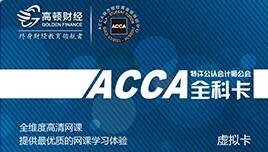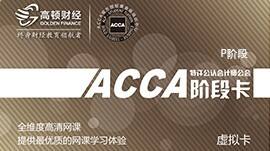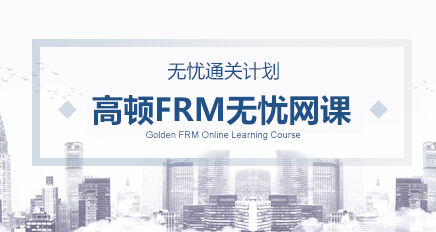【F5】09年12月F5官方考试分析——Ms.Wu
【F5】09年12月F5官方考试分析—— Ms.Wu
Analysis of Exam Paper F5 in December 2009
|
Question
|
December 09
|
Comments
|
|
1
|
Variances – calculation of basic materials price and usage variances and analysis into planning and operating variances. Analysis of these calculations to assess the performance of the production manager.
|
First part fairly straightforward, answers to the analysis of performance of the production manager required reference to earlier calculations. Similar to past questions.
|
|
2
|
Target Costing - calculation of average cost and cost gap and discussion on how the cost gap may be closed. Calculation of the cost of 128th chair using learning effect theory.
|
70% of the marks were for the calculations. These calculations were fairly straightforward without any twists.
|
|
3
|
Budgeting - calculations of expected output in next year, split of operating costs into variable and fixed elements using regression analysis and allowing for inflation. Discussion on incremental budgeting techniques.
|
70% of the marks were for calculations again. The requirement to allow for inflation in part (b) could have caused problems as there are no past questions that include this for students to practice.
|
|
4
|
Performance Measurement – assessment of financial performance, calculation of some KPI’s. Assessment of quality of service provided and risks associated with current policies.
|
Typical question for this exam as per the pilot paper. 75% of marks awarded for discussion.
|
|
5
|
Short term decision making – relevant costing calculations, explanation of two pricing strategies and description of issues surrounding a make or buy decision.
|
Fairly straightforward calculations however the large volume of information could have caused problems and students were not specifically told to use relevant costing. Parts (b) and (c) are straightforward.
|
General comments
The exam consisted of 5 questions which were compulsory, and there was no evidence shown that the candidates had time pressure.
The pass rate was 52%.
Specific comments
Question one
Variance calculation and analysis
a) Straightforward calculation of material price and usage variance – easy mark but many candidates were very poor of doing that because it was the content in Paper F2.
b) More difficult calculation of operational and planning variances for material price and usage – unsurprisingly, answer for part (b) could have been better. There are two methods of calculating these variances, both of them were marked correctly; however, you should make sure they were consistent.
c) Written requirement to assess the performance of the production manager. Even if you had no idea about all the above questions, you still had opportunities to gain the full marks for question c. Do not forget to mix your common sense with the knowledge and also analyze according to the specific case. Operational variances are deemed to be within the control of the production manager, planning variances are not; the net effect of usage and price variances must be considered when assessing the production manager’ performance.
Question two
a) Easy marks, average cost of a chair using learning curve. – we found the mistake again which was happened frequently. a = the cost taken to make the first unit, this cost is the cost of labour used for making the first unit not the total cost of making the chair.
b) Discussion how to close a cost gap – target costing is the selling price is ascertained and then, taking off the business’ desired margin, the target cost is arrived at. So you can say, sourcing cheaper materials of the same quality, but not increase the selling price. You should know what the meaning of target costing is!
c) Higher level, average cost of a chair based on the incremental cost of the final chair when learning curve is finished. Please do not forget to bring the scientific calculator into the exam!
Question three
The question was a predominantly numerical question about budgeting. Answers to this question were a lot better than expected.
a) time series analysis
b) regression analysis – lots of candidates used high – low method, we guess it was not because they made mistake on reading the question, the true reason was they do not understand what the regression is, this is the content in Paper F2 too.
c) advantages and disadvantages of a local government organization using incremental budgeting. – we got many reasonable answers, however if you can mention a specific local government organizations as an example, that will be better.
Question four
Classic performance management question, both financial and non-financial performance indicators
a) always happened, the calculation was all right, but only few analysis and deep thoughts. For example, Sales increased by 1.3%. many candidates wrote: SALES INCREASED BY 1.3, WHICH IS GOOD. Actually you should say: sales increased by 1.3%, just above inflation. This was purely down to the increase in admission prices rather than an increase in the volume of sales, since visitor numbers actually fell by 6.7%, overall this is not particularly good. Also you’d better to mention some qualitative factors, such as “it is not good for the long – term prosperity of the company”.
b) Quality of the service and risks the company was facing with its current policies. This question was answered better than last one. We found some good common sense points. But some students forgot to mention the risks. I guess this was due to reading carefulness.
Question five
Decision-making, relevant costing, pricing and outsourcing
a) Straightforward shutdown decision with a tricky of bulk purchase discounts. But you should review the meaning of relevant cost. For example, if production ceased now the factory space could be leased out for $12,000 per annum. Many answers showed this as income in the ‘cease now’ calculation but then also as a cost in the ‘stop in 12 months’ calculation. This double counting was wrong.
b) Regarding the pricing strategies, you can say complementary or product line pricing. But you should not say ‘penetration pricing’ or ‘market skimming’ as TD is not a new product.
c) Outsourcing, majority candidates answered this well.
Written by Yue Wu, lecturer Paper F5.

相关阅读
必看:2012年12月ACCA考场答题tips2012/11/20
2012年12月ACCA考前必看实用小Tips2012/11/15
2012年12月ACCA考前必看:Essential Guide2012/11/15
ACCA官方推荐12月考前冲刺复习方法2012/11/12
2012年12月ACCA考前必看实用小Tips2012/11/15
2012年12月ACCA考前必看:Essential Guide2012/11/15
ACCA官方推荐12月考前冲刺复习方法2012/11/12

















